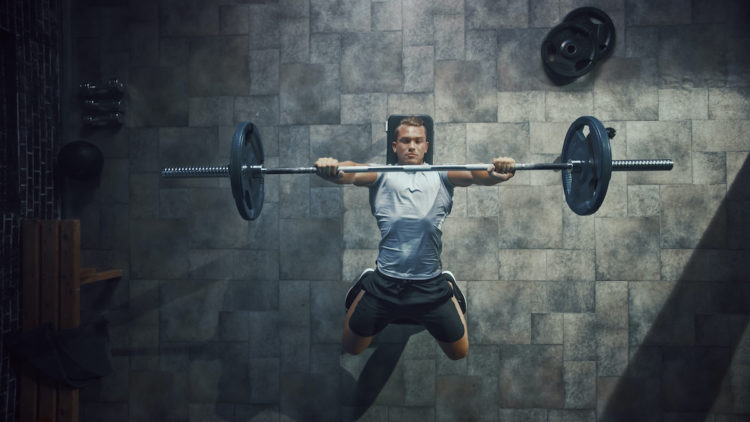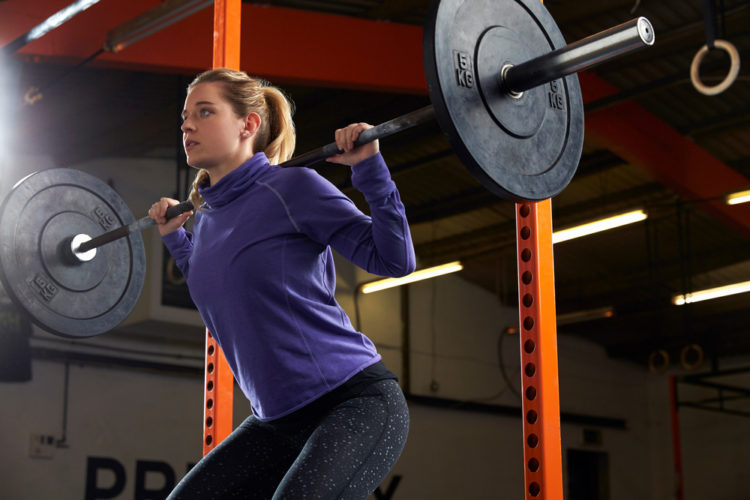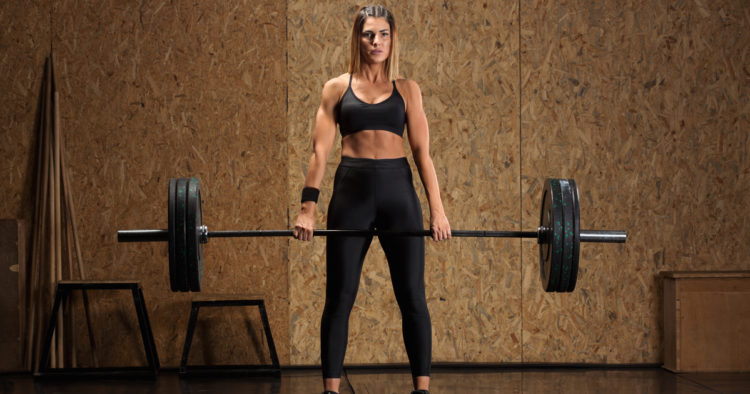Back in the 1800s, strongmen used partial range of motion (ROM) lifts, like the silver dollar deadlift, to impress the crowds with their feats of strength… because they knew they could lift more weight. The crowds didn’t know this, but the strongmen sure did. Show-offs.
Partial ROM lifts returned to fashion in the 1970s, when power racks, which allow the athlete to start the lift at various heights and reduce the ROM, became commonplace.
Ever since, lifters have used partial ROM lifts as a method to bust through plateaus and build strength.

What Are Partial ROM Lifts?
They’re lifts with a range of motion that is partial. As in, you’re not using the full range of motion: you’re training a certain portion of the lift. For example, a rack pull begins at or above the knees, and you’re just lifting the bar from there to the lockout position at the end of a deadlift. If lockout is a weak point on your pull, this lets you train your lockout — and with a lot more weight than you could lift from the floor. (If you so choose.)
How Partials Work For Strength
One of the major reasons partials work is by desensitizing the Golgi Tendon Organs (GTOs) These are found within the tendons on each end of the muscle belly.
The GTOs role is mainly one of protection. They activate when your body senses excessive force is about to be produced and there’s a risk of tearing your muscle or tendon.
Heavy lifting helps desensitize the GTOs. Bouts of heavy lifting convinces your nervous system that your muscles can handle a heavier weight without tearing muscles or tendons. Because you can use more weight with partials, this method is effective in desensitizing your Golgi Tendon Organ.
[Related: 4 quick tips to improve your deadlift lockout]

When To Use These Lifts
So when’s the right time to try a partial ROM?
Coming of an injury or full ROM lifts are causing pain
When you’re coming back from an injury, like a lower back injury, pulling from the floor is a risky proposition. This is when rack pulls (more on them below) may be advisable.
Or maybe full ROM lifting is causing discomfort in your joints. If getting into a full, deep squat feels iffy on your knees, limiting yourself to a box squat may be useful. (In conjunction with a trip to the doctor, of course!)
Working Through Sticking Points and Plateaus
As described above, if you find yourself regularly losing your lift at a particular point, you can try just training that portion of the ROM. The theory is if you strengthen your sticking point, you’ll improve your overall strength.
This is why partial lifts can be great when you’re stuck in a plateau and your 1RM isn’t budging. By reducing ROM, the lifter can recover from the full ROM lift while improving their strength and efficiency in the range of motion being trained.
[Related: The definitive guide to overcoming squat sticking points]

2 Different Types of Partial Lifts
You can further break down these exercises into the following subcategories:
- Eccentric-Concentric: You start each rep with an eccentric contraction before the concentric. For example, with a board press where you would lower down to touch the board before pressing the weight back up.
- Concentric-Eccentric: You start with the concentric contraction and then lower the bar back down. A great example of this is rack pulls or pressing from the pins.
Programming Tips For Partial Lifts
This varies depending on what type of lift (concentric-eccentric or eccentric- concentric) and how large the range of motion you are using. Shorter ROM means you use a heavier weight, larger ROM means a lighter weight.
Here are some general recommendations for fitting these lifts into your routine:
They’re best programmed as an accessory exercise after a full ROM lift. Use a weight of between 90-120% 1RM depending on the ROM and the type of partial lift.
Best rep range is between 1-5 reps. If you can do more than 5 reps, increase the weight or ROM.
Training the partial lift in the same workout as a similar, full ROM lift is often recommended to develop more strength and power.(1) Of course, coaches can program these lifts almost anywhere based on your goals and what the rest of your workouts look like.
Here are three partial ROM lifts to strengthen your weaker points so you can bust through plateaus to add strength and muscle.
1. Anderson Front Squats
Benefits: Leg drive with deadlifting, getting out of the hole, and the lockout portion of the squat.
When you’re lifting from the pins, you’re taking the eccentric contraction and the stretch shortening cycle and purely relying on the concentric contraction to lift.
This strengthens your leg drive, which aids in both the squat and deadlift. The pin placement can be varied to train specific ranges of motions to zero in on your sticking points. For example, if you’re having trouble with the bottom part of your squat/deadlift, set the pin and the weight lower.
[Related: Why almost any athlete can benefit from the Anderson squat]
2. Bench Board Press
Benefits: Improves lockout strength and reduces the range of motion if full ROM pressing is causing pain.
The board press is a stack of 2x4s held by a partner on your chest to shorten your range of motion. If you don’t have boards or a partner… well, sticking boards underneath your shirt or using a half or full foam roller can work, but be careful.
This shortened ROM allows you to overload your shoulders and triceps to allow you to attack a common weak point in the bench press: the lockout. This variation includes the eccentric contraction (like with most presses) but this is the strongest part of the muscle contraction due to less muscle friction.
The ROM can be varied (1 to 4 boards) to zero in on your particular sticking point. Plus, there’s a couple of slight variations, depending on your goals and weak points. You can bring the barbell to the boards and,
- Soft Touch: You barely brush the boards before pressing back up. This works for technique and control.
- Touch And Go: When you’re wasting no time pressing once the barbell touches the board. The goal here is to do more reps.
- Pause On The Boards: Works on tension in the bottom position and takes the stretch reflex out of it, making it harder to press it back up.
Furthermore, you can vary your grip to emphasize the triceps (close grip) or pecs and shoulders (wider grip).
[Related: 5 tips to improve your bench press lockout]
3. Rack Pulls
Benefits: Improves your lockout strength, grip strength and upper back strength.
You cannot have an article about partials and not include the most famous partial of them all: the rack pull. This lift allows you to overload the lockout, a common weak point in the deadlift.
If you’re finding yourself getting stuck below the knees, this is where you set up the rack. If it’s above the knees, set the rack (or blocks) up just above the knee where your teardrop muscle is.
When rack pulls are performed as an accessory exercise in conjunction with your regular deadlift, you’ll increase your pulling strength due to the aforementioned Golgi Tendon Organs desensitization and increase your grip and upper back strength, which are all important aspects of crushing your deadlifts.
You should mimic your grip and stance to match your regular deadlift to have better carryover. Best of all, you feel like a superhero with all that weight on the bar.
Wrapping Up
Working partials into your accessory exercises is a great way to attack your weakness to help you get stronger at the big 3. Don’t mistake reduced ROM for easy, as these lifts are anything but.
It’s hard to train weakness, but there is no strength without struggle.
Reference
- Bazyler CD, Sato K, Wassinger CA, Lamont HS, Stone MH. The Efficacy of Incorporating Partial Squats in Maximal Strength Training. J Strength Cond Res. 2014 Mar 20.